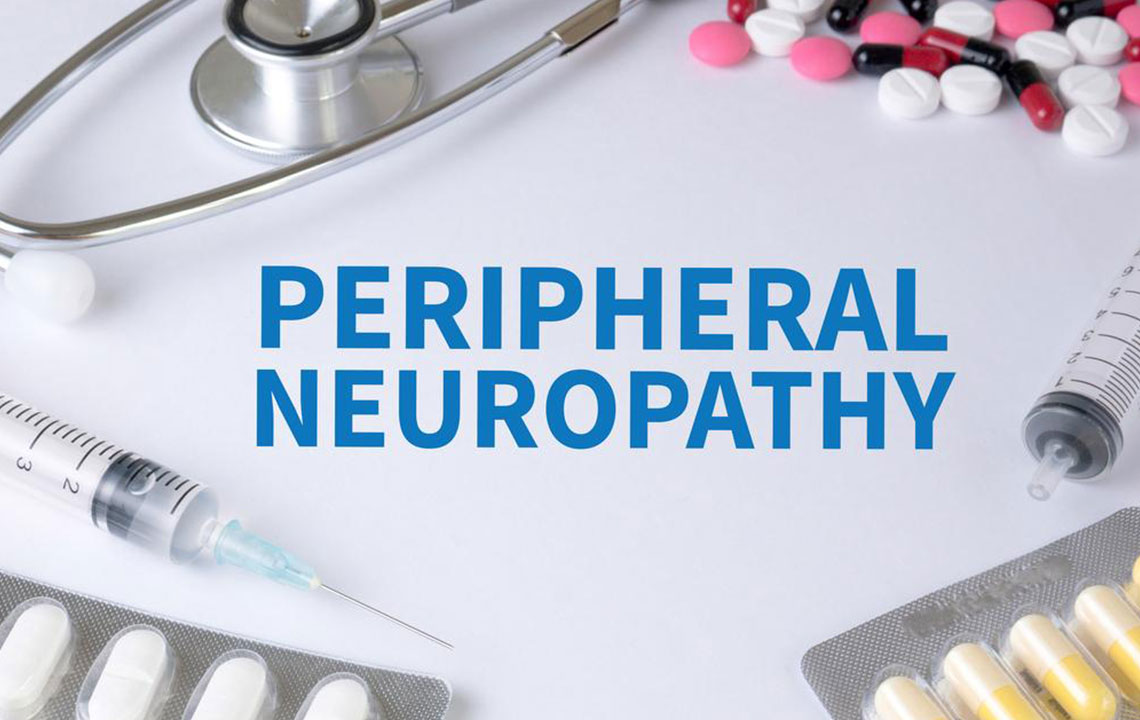Popular and Effective Treatment Options for Neuropathy
Neuropathy is a condition caused by nerve damage, characterized by numbness, weakness, and tingling or stabbing sensations in hands and feet. Even though neuropathy is most commonly caused by diabetes, it may also occur as a result of injury, infection, or exposure to toxic chemicals.
Types of neuropathy medications
Most neuropathy medications help control pain and inflammation or (in cases where the cause is diabetes) sugar levels in the blood.

Popular neuropathy medications include:
- Painkillers: Nonsteroidal anti-inflammatory drugs or NSAIDs are common neuropathy medications used to reduce inflammation and pain. These drugs are easily available without a prescription. Naproxen is one such drug, which dulls the chemical signals that cause inflammation and pain. Another NSAID that is commonly used is Ibuprofen. It also works on the same principle as Naproxen. Acetaminophen, also known as analgesics, are neuropathy medications designed primarily for pain relief. Tylenol is one such medication that works by manipulating the pain signals to the brain. However, prolonged intake of these medications can lead to liver damage. Exercise caution when using such painkillers.
- Anti-seizure medications: These medications are usually prescribed to treat epilepsy. However, since they interfere with pain signals, they can have a calming effect on the nerves in case of neuropathy.
- Topical treatments: Capsaicin cream is an effective topical treatment used for neuropathy medication. Although it stimulates the pain signals initially, the application of this cream subsequently relieves you. Capsaicin cream contains a substance found in hot peppers, which acts as a remedy to the symptoms of peripheral neuropathy. Another treatment option is the application of Lidocaine patches. Lidocaine is a local anesthetic and works by hindering nerves from emanating pain signals to the brain. However, the side effects of its application include drowsiness, dizziness, and numbness at the place where you apply the patch.
- Tricyclic antidepressants: Desipramine (Norpramin) and doxepin (Silenor) in low doses decrease the intensity of chemical signals that influence how the brain perceives pain. This way, these neuropathy medications can counteract pain signals.
- Narcotics: In severe cases where none of the other neuropathy medications help relieve the pain, narcotics may be administered for relief. These are medications to be taken under the strict supervision of a doctor as they are very powerful pain-killers and come with side effects. Tramadol (Ultram or Ultracet) and Oxycodone (OxyContin) are two opioids (narcotics) that can be administered for relieving neuropathic pain.
- Control of digestive symptoms: Neuropathy, albeit in only a few cases, may cause delayed emptying of the stomach; this is called gastroparesis. This is treated by making dietary changes. This symptom may be accompanied by diarrhea, constipation, and vomiting, all of which can be treated with neuropathy medications.
- Issues with bladder control: Due to the weakened nerves, the communication to empty the bladder may be too weak and go unnoticed, resulting in leakage. In such cases, treatment with antispasmodics and anticholinergics can be useful.
Therapy
- Physical therapy: Strengthening exercises help in building muscle strength and can reduce pain. Simultaneously, exercises keep the sugar levels under control, which happens to be a prime cause of neuropathy. A therapist can draw out a balanced training program for you, with a combination of aerobics, stretching, strengthening, and balance exercises. Physical exercises are necessary to avoid cramps and spasms in muscles caused by weakness.
- Transcutaneous electronic nerve stimulation (TENS): This technique involves stimulating the nerves using low power electric currents. Electrodes are placed on the skin and electricity is passed through it, causing interference with the pain signals, thus diminishing the feeling of pain
- Plasma exchange: In cases of peripheral neuropathy, which causes inflammation in the body, doctors use the procedure of plasma exchange. Blood is drawn out of the body, stripped of its antibodies and proteins that cause the inflammation, and then pumped back into the body. This needs to be done on an outpatient basis. Side effects may be seen in the form of diarrhea, nausea, vomiting, and appetite loss.
- Intravenous immune globulin: In this procedure, proteins are injected into the blood which then acts as antibodies and improves immunity.
Alternative treatment options
- Acupuncture: This is a therapy carried out by a trained professional, in which thin needles are inserted in the extremities of the body to treat the symptoms of neuropathy.
- Chiropractic care: A chiropractor makes adjustments to the vertebra to restore flexibility and enable free movement of the extremities.
- Massage: Massage meant to relieve this tightness in the muscles and is focused on certain vital points in the lower back and the legs to relieve the pain.
- Alpha-lipoic acid: In Europe, this particular ingredient has proved to work well with neuropathy treatment. It affects the blood sugar levels, and hence it is advisable to discuss with a doctor before using it. Side effects may include an upset stomach and skin rash.
Disclaimer:
The content provided on our blog site traverses numerous categories, offering readers valuable and practical information. Readers can use the editorial team’s research and data to gain more insights into their topics of interest. However, they are requested not to treat the articles as conclusive. The website team cannot be held responsible for differences in data or inaccuracies found across other platforms. Please also note that the site might also miss out on various schemes and offers available that the readers may find more beneficial than the ones we cover.




